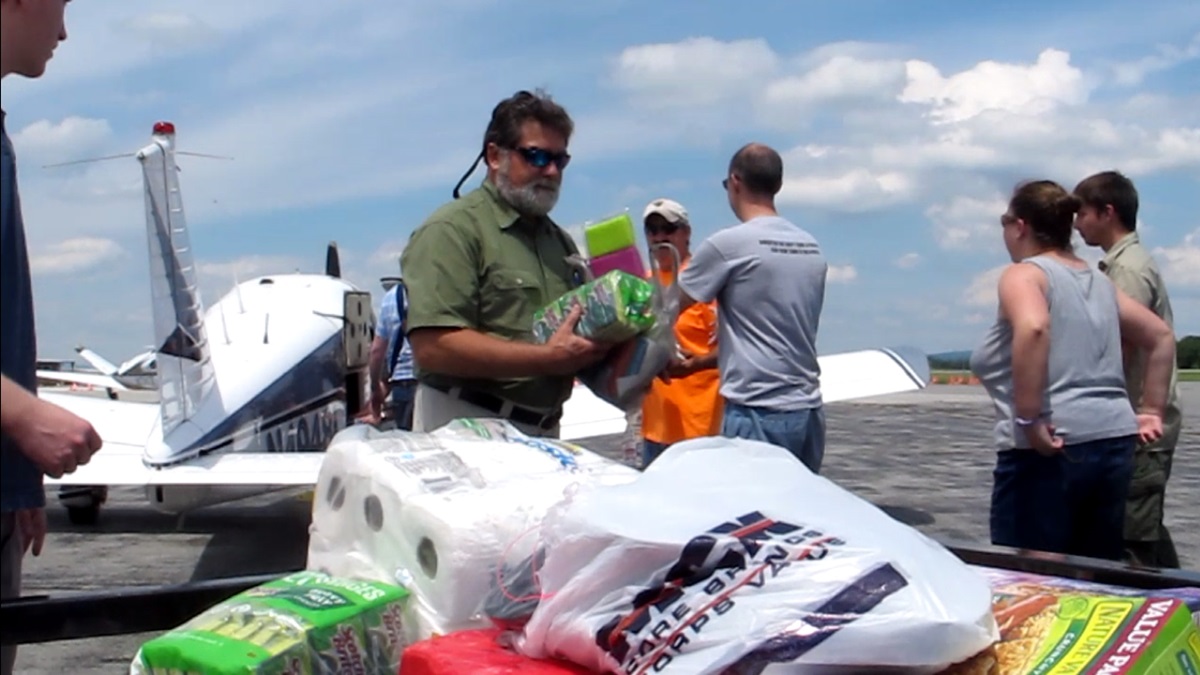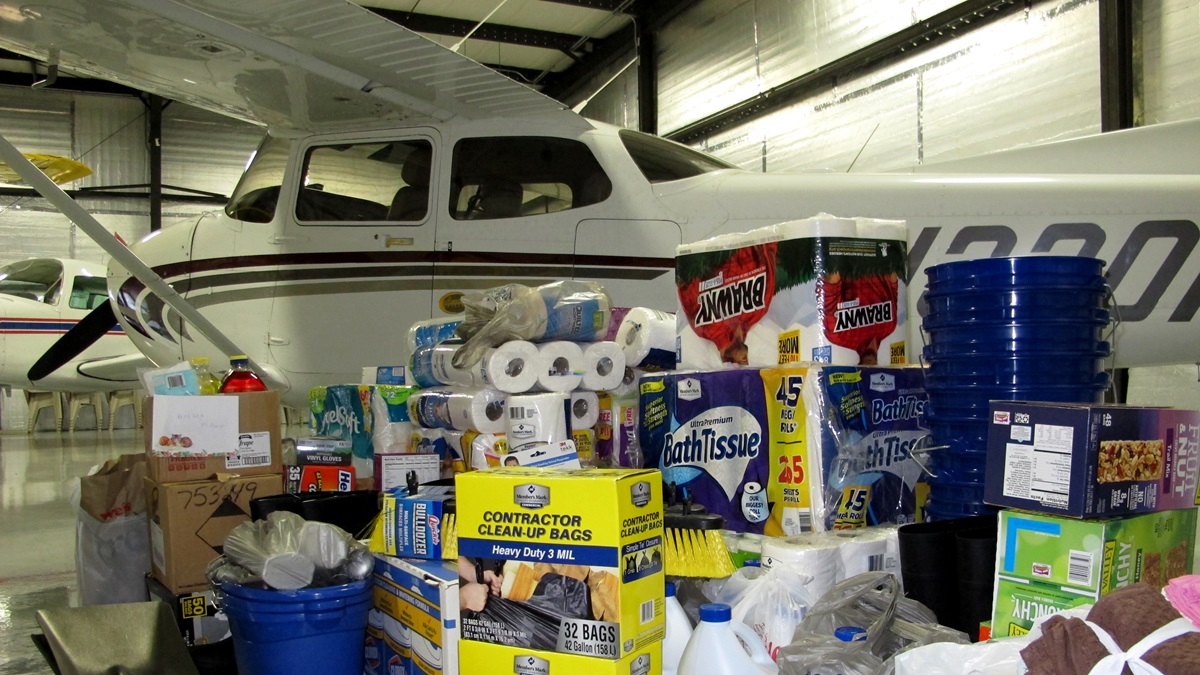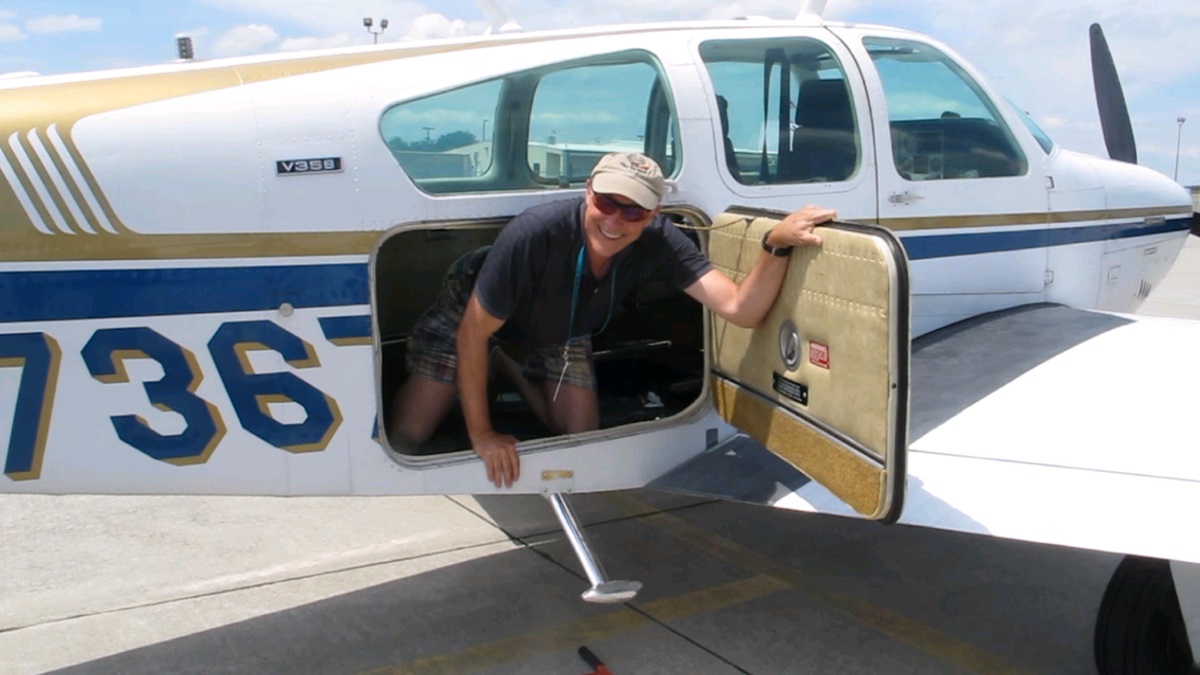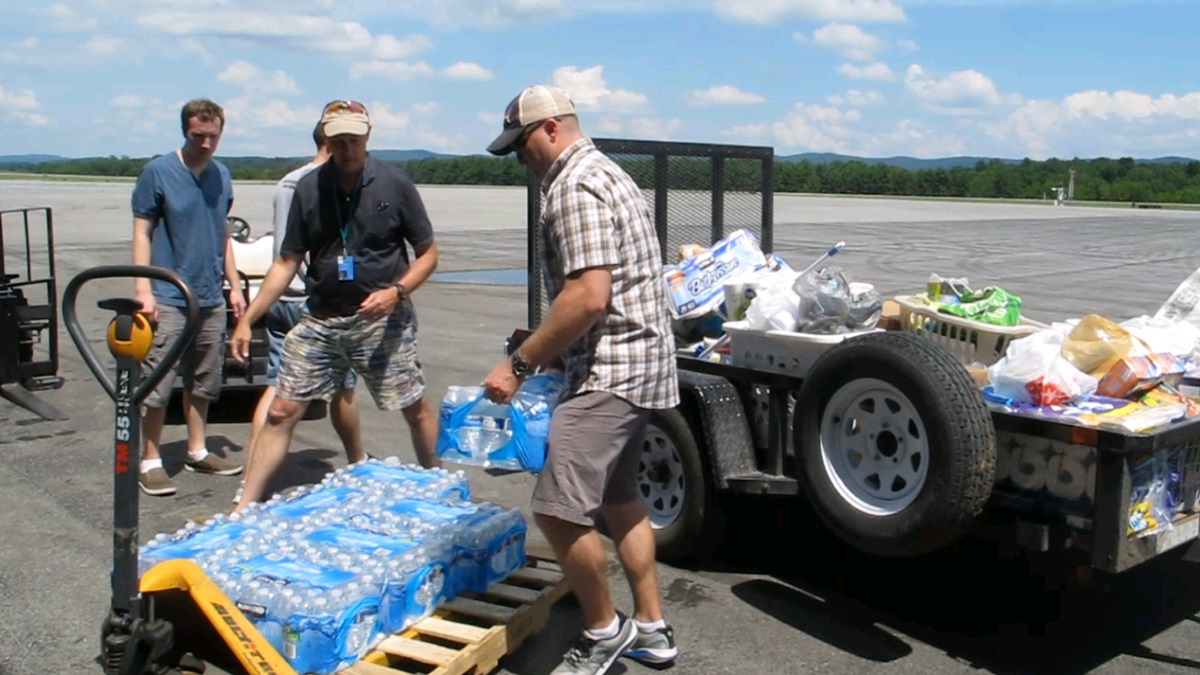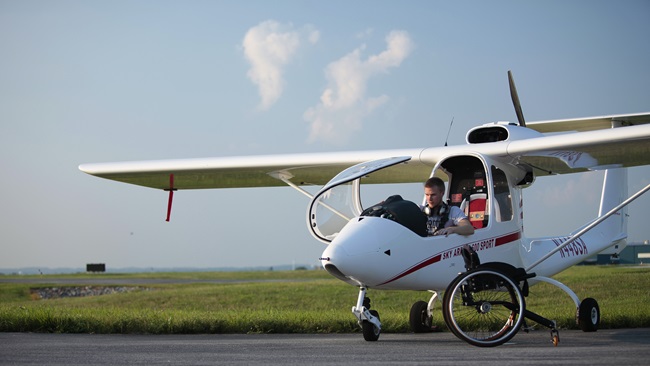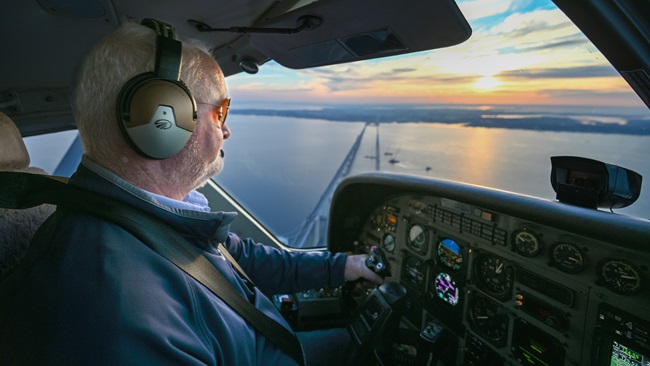Pilots fly disaster-relief supplies to West Virginia
Severe storms and rain hit the state June 22 and 23, causing floods, landslides, and mudslides that, according to an initial assessment by West Virginia emergency officials, destroyed 1,500 homes and 125 businesses, and damaged 4,000 homes across the state. Greenbrier County was one of the hardest hit, forcing the cancellation of the PGA tournament scheduled at The Greenbrier Resort. The resort is now helping to house and feed people who have been displaced from their homes and is working to repair damage that its grounds sustained as well.
“The water was four feet deep. We could not get out, we could not get home to any of our families,” Parker recalled. “It was scary.”
According to the National Weather Service, more than 10 inches of rain fell in parts of Greenbrier County during a 12-hour period. “Return period data suggest this would be nearly a 1 in a thousand year event,” the service said in an updated July 1 statement. President Barack Obama declared a major disaster area June 25, enabling the Federal Emergency Management Agency (FEMA) to provide federal assistance. Twelve counties have been added to the federal disaster list, and FEMA had approved more than 2,000 individual assistance applications as of July 6.
Gabriel Glinsky and Jill Cely were eating dinner in North Carolina when they learned of the flood damage in late June and decided to rally the general aviation community to help. Glinsky contacted pilots from his local Experimental Aircraft Association chapter in North Carolina and AOPA to use airplanes—what he calls a “powerful tool” and a “gift”—to deliver supplies to the area.
Arriving at the Greenbrier Valley Airport atop a 2,300-foot mountain, the pilots flew over one of the hardest-hit towns in the state, White Sulphur Springs, nestled in the valley. An aerial view of the city showed homes washed off foundations and dried mud covering much of the valley. (See footage of the damage from a Black Hawk helicopter.)
“You think, ‘What can a small little plane do?’” said Glinsky, who organized the July 2 effort in just a week. “And then you see this trailer just full of stuff because we all brought a little bit out with us, and it’s just amazing.”
Five airplanes brought in about 2,000 pounds of supplies—water, bleach, cleaning supplies, brooms, shovels, toilet paper, paper towels, trash bags, and food—filling the back seat of a quad cab truck, its truck bed, and the trailer behind it. The pilots then unloaded the supplies in a large hangar on the airport that the Red Cross had opened.
“There’s a ton of water,” Glinsky said as the men started piling packs of water bottles on a pallet.
“Well, not a ton but a couple hundred pounds!” Tom Goodwin, the Bonanza pilot who flew in much of the water, exclaimed.
Glinsky had contacted emergency management in advance of the flight to find out how to coordinate the drop-off of supplies and was connected with Rev. Joshua Saxe, Rector of the St. James’ Episcopal Church in Lewisburg.
This “is an excellent opportunity for us to take advantage of your capability of transportation, supplies, goods—the needs that we might not be able to get here quickly,” Saxe told the group of pilots who visited the church’s disaster-relief distribution center. Saxe said the area has “received an abundance of supplies, we’re blessed,” but added that the recovery phase will be long and that additional supplies and volunteers will be needed for months to come.
“It is a widespread disaster area,” Saxe continued, “and we are in it for the long haul.”

